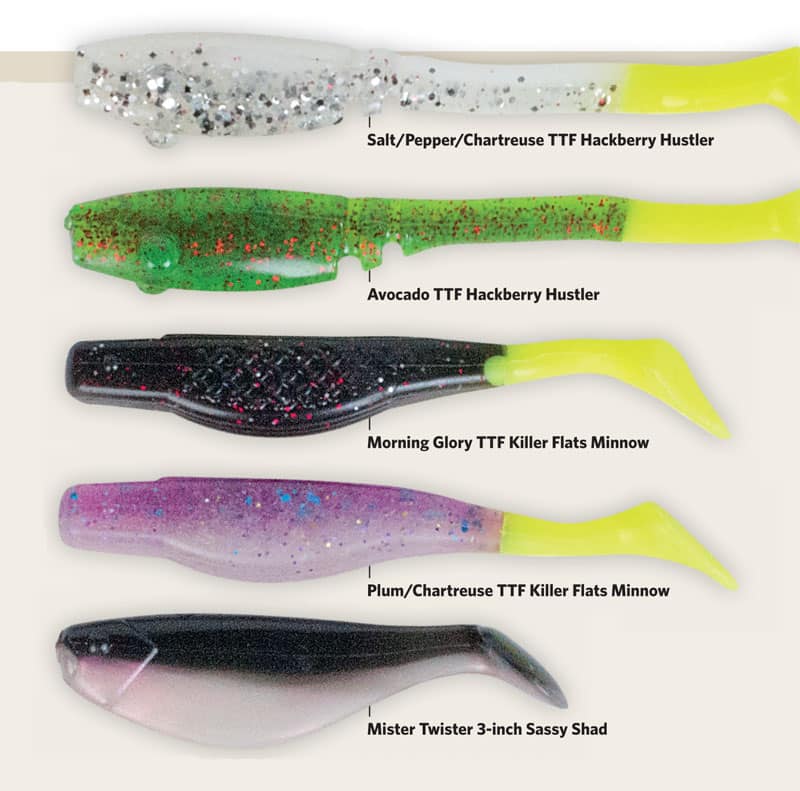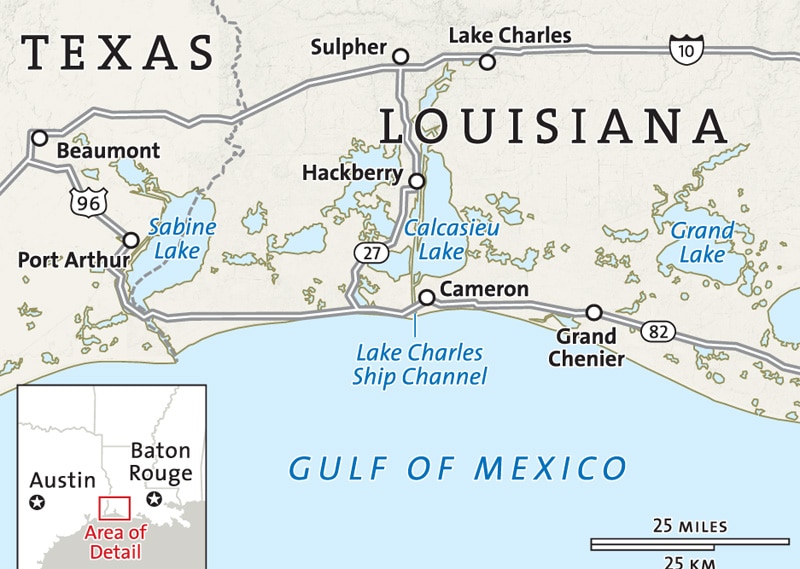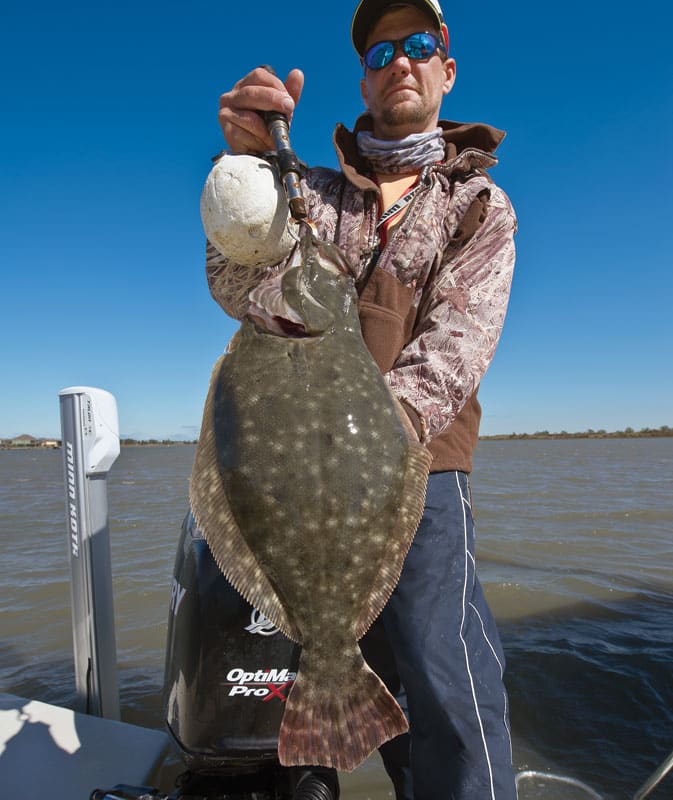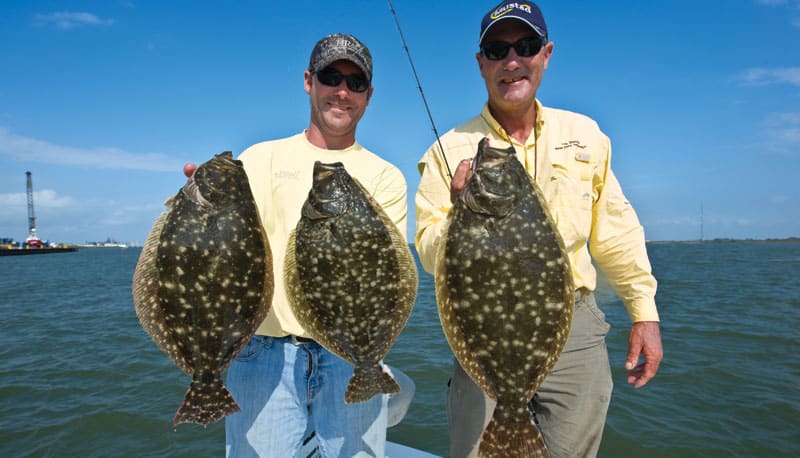
Big and Plentiful
Capt. Kirk Stansel seemed anxious as we idled out of the canal in the cool of the morning. “The big fish are here and are biting,” he said. Keeping my enthusiasm in check when Stansel slowly leaned into the throttle, I fought the urge to help him push it all the way down. He had been plying these waters long enough to know the how, when and where of trophy inshore fish on light tackle and is widely known as a trophy trout and redfish expert. I was certain that in no time we’d be chucking topwater lures for giant seatrout or perhaps chasing schools of surface-busting redfish along the grassy edges of the bay’s shoreline. But this light-tackle guide had other plans. I was about to be reintroduced to a game fish with misplaced notoriety, given high status as table fare but little fanfare: the southern flounder.
In coastal Louisiana, flounder are often more of an afterthought than a targeted species. In an area where gator-size seatrout are as thick as mosquitoes and redfish lurk on most every flat, flounder are what Cajuns call lagniappe: a little something extra. But in recent years, there has been such an increase in both the size and quantity of Gulf flounder in their amazing, pole-bending biannual run that they have garnered much more respect, transitioning from bottom-dwelling bycatch to sought-after trophies. Southern flounder are aggressive feeders, the largest of all flatfishes in the coastal northern Gulf and highly prized as a delicacy, as well as for their outstanding qualities as sport fish.
The Two-Step
“The fishery is unique and bountiful,” says Jeff Ferguson, a biologist with the Louisiana Department of Wildlife and Fisheries. “Even though there are two distinct runs for anglers to enjoy, the fish are around all year.”
As an angler who targets the flatfish himself, Ferguson is quick to point out the species’ vitality and timing: “We start to see flounder numbers rapidly increase in February, as water temperatures signal their re-entry from the Gulf.”
The young fish enter the bays during late winter and early spring. At this time, they are about a half-inch long and seek shallow, grassy areas near the Gulf passes. As growth continues, some move farther into bays, coastal rivers and bayous. Males seldom exceed 12 inches, but females grow larger and often reach 25 inches or more. Most flounder caught by anglers are female. Ferguson also points out that the Gulf Coast’s two-year drought has affected the species.
“Because of high salinity, the fish have pushed well into the far reaches (northernmost confines) of our system,” he says. Once in the estuary, flounder grow rapidly, reaching 12 inches by the end of their first year. Research indicates that males stay offshore, while females leave the estuary around Thanksgiving to spawn in the Gulf of Mexico.
Dance Floor
A confluence of events was taking shape as the morning warmed with the sunrise. With a quick snap of the handle, Stansel deployed the trolling motor, positioning the boat to anchor us within casting distance of a marshy drain. We could see the strong outgoing tide push up small waves as terns and pelicans fanatically fed. It was fishy, so much so that smaller flounder occasionally leapt from the water to chase small glass minnows or perhaps flee from their larger brethren. A southeast wind pushed green seawater against the outflow, piling bait upon itself like a finfish buffet.
Stansel generally targets flounder starting on the full moon in March. “The spring run started a few weeks ago, and we have been seeing some really big fish. Typically I like to use the lightest jig that can get me to the bottom, usually a quarter-ounce jig with a Hackberry Hustler in Geaux Gleaux,” said Stansel as he rapidly tied one to both his leader and mine with Albright knots. He pointed out that big bait doesn’t necessarily mean bigger fish.
“I’ve found that big flounder always seem to be gorging rather than seeking out a large meal,” he said. “Color is important, but not as much as finding my clients the right conditions: bait presence, bait presence and bait presence.”
It didn’t take long for us to get in on a fat flatfish blitzkrieg, as Stansel’s first fish pushed 6 pounds.
“The spring and fall have been amazing,” he said as he scooped up his spotted white and brown fluke, “and the fall runs continue to be ridiculous.”
The fall run is characterized by a spectacular exodus of flounder as they move to the Gulf for spawning. This is when the rubber meets the road: “The best catches that time of year are made in the Calcasieu Ship Channel leading to the Gulf.”
The channel, which is a 30-plus-mile fish artery into the estuary, turns into a flounder funnel around Turkey Day. During that run, the fish pile up as waiting anglers cash in on the frenzy. Wading is popular too, as anglers easily work the channel ledges and flats on foot.
“The same techniques we use in the spring work well in the fall, except that typically we upsize our jigs to three-eighths or five-sixteenths because the current is stronger,” said Stansel.
Our bite remained consistent. When it slowed, Stansel cut a small strip off the belly of one of our iced-for-dinner flounder. It was a dinner bell that really seemed to turn the fish on. Once more, we had bent rods and sore forearms. “It is amazing how strip baits enhance the bite,” said Stansel. I agreed as I watched him reach into the water to scoop up another big Calcasieu flatty.
Last Dance
For several hours, we consistently caught those big “Hackberry halibut,” releasing several females over 5 pounds. It was a stellar spring morning. We decided to head to the lodge for lunch, perhaps stuff a few of our fish with crabmeat for the broiler. Even though Stansel seemed more relaxed, I was still thinking about those famous Calcasieu trout and big redfish schools. “How about we go back out this afternoon and throw topwater lures for trout and reds,” said Stansel. Music to my ears. This time I did reach over and push the throttle all the way down.
Northern Gulf Flounder
Rods: 7-foot conventional rods, medium-heavy with a light tip.
Reels: Conventional or spinning reels.
**
Lines:** 20-pound braided line.
**
Leaders:** 9 feet of 20- to 25-pound fluorocarbon joined to the main line with a double uni-knot.
Lures: Texas Tackle Factory’s Hackberry Hustlers in Geaux Gleaux, Avocado and LSU (purple-and-gold). Berkley Gulp! Shrimp in New Penny and PowerBait Mullet in white.
Baits: Natural strip baits, live shrimp, live pilchards or live mullet.
****What: Southern flounder.
When: Year-round, but exceptionally good in April and November.
Where: Louisiana, Texas and Mississippi Gulf Coast estuaries.
Who: This company took its first charter out on Calcasieu Lake in 1975. Its guides know how to do it.
Hackberry Rod and Gun
888-762-3391
www.hackberryrodandgun.com

Big and Plentiful
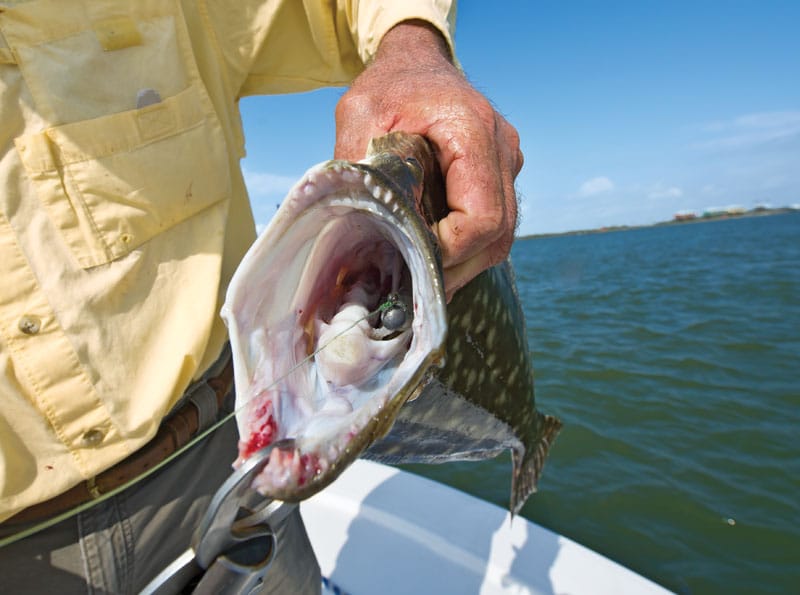
Aggressive Feeders
